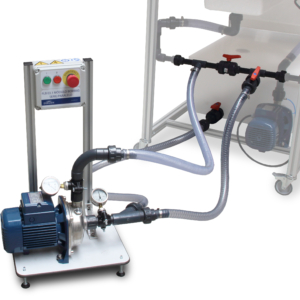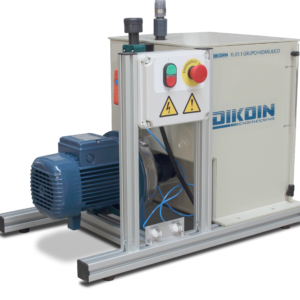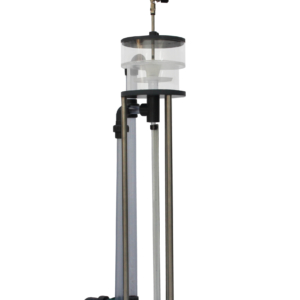FLB 03.1 – Series and Parallel Pump Module
Pumps are included in a piping system to convert mechanical energy into hydraulic energy. This additional energy allows the transmission of a fluid from one place to another when it is not feasible to flow by gravity, raise it to a certain height on the pump or recirculate it in a closed system. In general, the effect of a pump on a system is to increase the total energy by an amount H.









